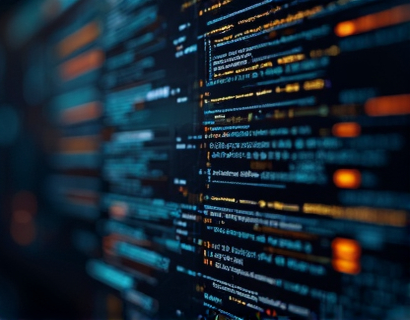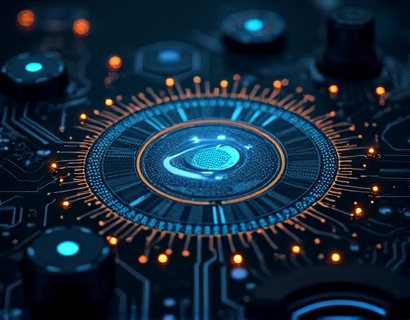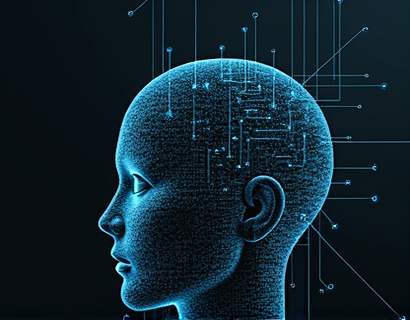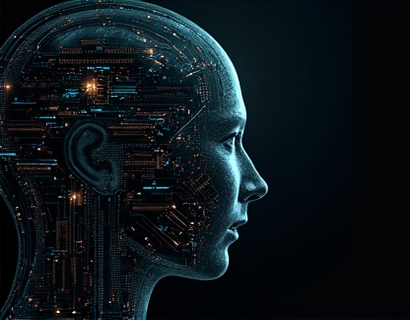AI-Driven Poker Education: Unlocking Success for Beginners and Pros
In the world of poker, the intersection of skill, strategy, and psychology creates a complex game that challenges even the most seasoned players. For beginners, the learning curve can be steep, while pros continuously seek ways to refine their game. Enter AI-driven poker education, a revolutionary approach that leverages advanced technologies to transform the way players of all levels learn and master poker. This comprehensive learning platform combines beginner basics with advanced strategies, offering intelligent and personalized educational resources that adapt to each player's unique needs and progress.
Understanding AI-Driven Poker Education
AI-driven poker education represents a paradigm shift in how poker is taught and learned. Traditional methods often rely on books, videos, and live sessions, which, while valuable, may not cater to individual learning styles or pace. AI technology, on the other hand, can analyze vast amounts of data to create tailored learning experiences. These platforms use machine learning algorithms to understand a player's strengths, weaknesses, and playing style, and then generate customized lessons and exercises to address these areas.
The core idea is to provide a dynamic and interactive learning environment that evolves with the player. For beginners, this means starting with the fundamentals of poker, such as hand rankings, betting structures, and basic strategies. As the player progresses, the AI adapts by introducing more complex concepts like pot odds, expected value, and psychological tactics. For advanced players, the focus shifts to refining existing skills, exploring niche strategies, and analyzing real-game scenarios to improve decision-making under pressure.
Personalized Learning Paths
One of the most significant advantages of AI-driven poker education is the ability to create personalized learning paths. Each player begins with a baseline assessment that gauges their current skill level and identifies specific areas for improvement. Based on this assessment, the AI curates a customized curriculum that balances theory and practice. This ensures that players are not overwhelmed with irrelevant information and can focus on the aspects of the game that will most benefit their growth.
For example, a beginner might start with interactive tutorials that explain the rules and basic strategies, followed by simulated hands to apply what they've learned. The AI monitors performance and adjusts the difficulty and content in real-time. If a player consistently makes certain mistakes, the system will provide targeted lessons to correct these issues. For more advanced players, the AI might introduce complex strategy sessions, analysis of professional games, and even live streaming of high-stakes tournaments for observation and learning.
Interactive and Engaging Content
AI-driven poker education platforms go beyond static content by incorporating interactive and engaging elements. These can include virtual tables for practice, where players can play against AI opponents of varying skill levels, and real-time feedback on their decisions. This hands-on approach not only makes learning more enjoyable but also helps reinforce concepts through repetition and application.
Gamification is another key feature. By turning learning into a game, players are motivated to improve their skills and achieve goals. Badges, leaderboards, and rewards for milestones achieved can significantly boost engagement and retention. For instance, a player might earn a "Hand Reading Master" badge after successfully identifying and exploiting an opponent's tell in a series of simulated hands.
Advanced Strategy and Analysis Tools
For players looking to take their game to the next level, AI-driven platforms offer advanced strategy and analysis tools. These tools can dissect hands, providing detailed breakdowns of why certain decisions led to success or failure. Players can analyze their own play and compare it to expert play, gaining insights into areas where they need to improve.
Expected value (EV) calculators are a staple in these platforms, helping players make informed decisions by calculating the potential outcomes of different actions. The AI can also simulate millions of hands to demonstrate the long-term effects of specific strategies, giving players a clearer understanding of the math behind poker. This data-driven approach is particularly beneficial for pros who need to stay ahead of the curve and adapt to changing trends in the poker world.
Community and Support
While AI-driven education is highly personalized, the importance of community and support should not be underestimated. Many platforms include forums, chat rooms, and social features that connect players with peers and experienced mentors. This community aspect allows players to share insights, ask questions, and learn from each other's experiences. For beginners, this can provide a sense of belonging and support, while pros can engage in deeper strategic discussions and collaborate on advanced topics.
Additionally, AI can facilitate connections by matching players with similar skill levels or interests, fostering a collaborative learning environment. Virtual study groups and live Q&A sessions with expert coaches further enhance the educational experience, providing players with multiple avenues for growth and improvement.
Continuous Improvement and Adaptation
One of the most powerful aspects of AI-driven poker education is its ability to continuously improve and adapt. As players progress, the AI collects data on their performance and learning patterns, refining the educational content to better meet their evolving needs. This feedback loop ensures that the platform remains relevant and effective, even as the player's skills advance.
Moreover, the AI can stay updated with the latest trends and developments in poker strategy by analyzing new data and incorporating insights from professional players and recent tournament results. This keeps the learning material fresh and cutting-edge, ensuring that players are always learning the most current and effective strategies.
Overcoming Common Challenges
Despite its many advantages, AI-driven poker education is not without challenges. One common concern is the initial learning curve associated with using such technology. Some players, especially those who are tech-averse, might find the interface complex and difficult to navigate. However, most platforms are designed with user-friendliness in mind, offering intuitive interfaces and comprehensive guides to help users get started quickly.
Another challenge is the potential over-reliance on AI tools. While these platforms are incredibly helpful, they should complement, not replace, the development of a player's own intuition and decision-making skills. It's crucial for players to understand the underlying principles and not solely depend on the AI's recommendations. Balancing AI insights with personal judgment is key to becoming a well-rounded poker player.
Case Studies and Success Stories
To illustrate the impact of AI-driven poker education, consider the story of John, a beginner who joined an AI-powered platform to learn poker. Initially struggling with basic concepts, John benefited from the platform's adaptive lessons that focused on his weak areas. Over several months, he saw significant improvement, moving from playing for fun to entering local tournaments. His progress was tracked and celebrated through the platform's analytics, providing motivation and a clear sense of achievement.
On the other end of the spectrum, Sarah, a seasoned pro, used the platform to refine her game and stay competitive. She accessed advanced strategy sessions and analyzed professional games to identify new opportunities. The platform's community feature also allowed her to connect with other top players, leading to collaborative projects and shared insights that further enhanced her skills.
Future of AI-Driven Poker Education
The future of AI-driven poker education looks promising, with ongoing advancements in machine learning and artificial intelligence. As these technologies continue to evolve, we can expect even more sophisticated and personalized learning experiences. Integration with virtual reality (VR) and augmented reality (AR) could provide immersive training environments, allowing players to practice in realistic scenarios without the risk of real money.
Additionally, the incorporation of emotional intelligence and behavioral analysis could help players better understand and manage their psychological aspects of the game. By monitoring stress levels, focus, and decision-making under pressure, the AI can offer tailored advice to improve mental toughness and consistency at the table.
In conclusion, AI-driven poker education represents a transformative approach to learning and mastering the game. By combining personalized learning paths, interactive content, advanced analysis tools, and a supportive community, these platforms empower players of all levels to achieve their full potential. Whether you're just starting out or looking to refine your skills, AI-driven poker education offers a comprehensive and dynamic resource that can significantly enhance your journey at the poker table.










































